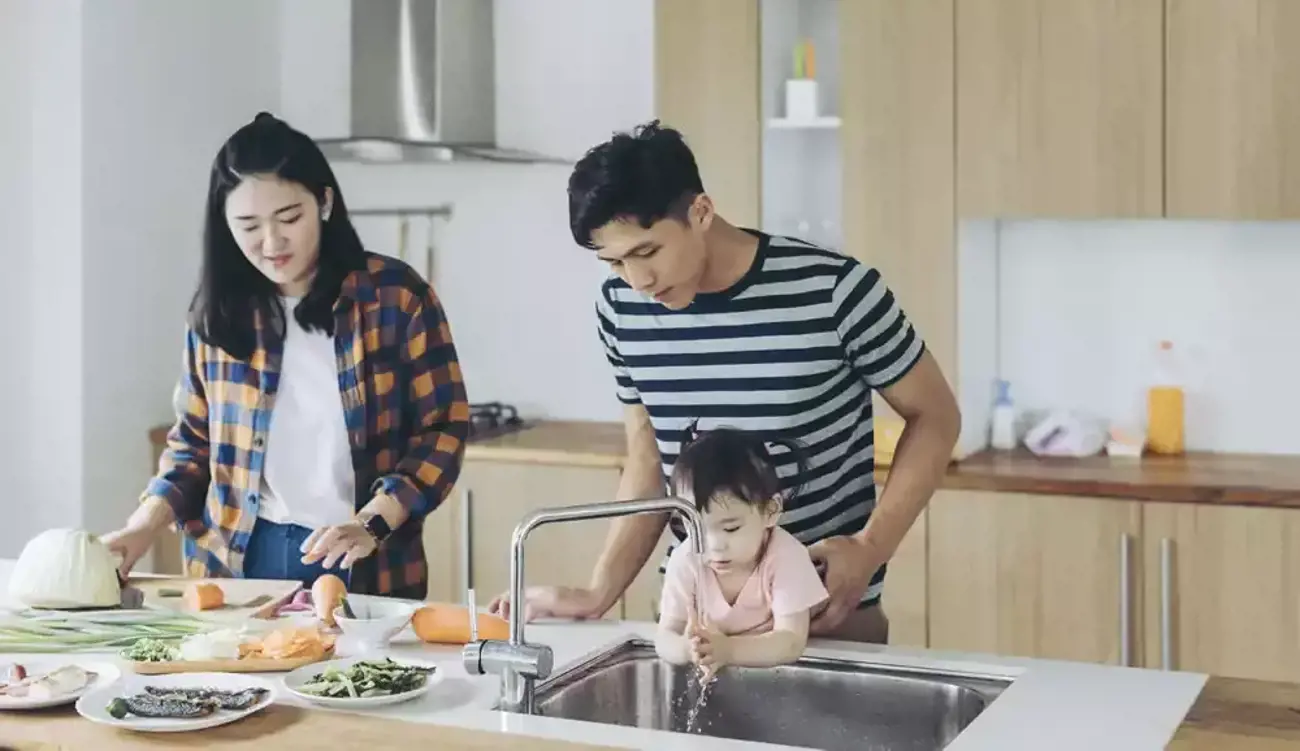Cooking is a great way to teach under fives about health and hygiene, practice early maths skills, encourage nutritious eating and make special memories with everyday ingredients.
That said, it can also be a recipe for mess!
Mini-chefs are still learning how to measure precisely, clean as they go and refrain from constant taste-testing, but here are some ways to manage your workspace, streamline the clean-up and impart some wisdom along the way.
Start by choosing the right moment – and recipe
This means that instead of making a cake at the end of a long work and child care day, you should approach the task when you’re both fresh and ready to share and learn. As head chef, you’ll need patience and enthusiasm in equal measures.
Also, think about the kind of recipe your child will be interested in and how you can involve them in the cleaning process. You might want to start with a one-bowl, no-cook recipe to pique their interest, and save that croquembouche with spun sugar for another time!
Get everything prepared
To keep your under five interested, and ensure the smooth-running of your recipe, it’s helpful to get out all the things you need before you start. Line up the ingredients and tools you’ll be using, and make sure your child can easily reach everything, so the chance of a major spillage is reduced.
Ensure the sink and dishwasher are empty, and keep a clean, wet sponge within easy reach.
Some parents also like to lay down baking paper or an old tablecloth on the work surface to make the final clean-up extra easy, though this isn’t essential.
Tie an apron around your child’s waist to protect their clothes (and make them feel like a real chef), tie back their hair and help them wash their hands, reminding them that this must be done before and after handling food.
Explain what your child will be doing, and how
Next, run through all the steps in the recipe, including any age-appropriate cleaning jobs your little one will be doing (such as wiping the benchtop or helping to load the dishwasher).
Explain that food preparation surfaces must be clean to keep people healthy, and show your child where empty packets, vegetable offcuts and other leftovers will go. One suggestion is to put three bowls in the work area so that recyclable, compostable and general waste can be separated simply.
Also, show your child where all the drippy spoons and sticky bowls belong once you’re finished with them. Depending on the pace of the recipe and your child’s age, you might like to load the dishwasher as you cook, handwash items together or ‘store’ everything in the sink until the end, if the pace is frantic.
Teach your child good habits
Although some home chefs fling ingredients with reckless abandon and worry about the mess later, it’s good practice to teach your child to measure well, store food carefully and clean as they go.
Wipe up any food spills straightaway and teach them skills like starting a beater on a low setting to reduce the chance of batter flying everywhere. Remind them to keep their hands clean and to never double-dip a licked spoon!
When you’re handwashing dishes, teach your child to wash everything in hot (but not scalding) soapy water. Start with the cleanest dishes first, and the dirtiest last, taking care with sharp items and explaining why it’s important to rinse off the soap.
If you’re using a dishwasher, show your child how this miracle machine is loaded and started.
Stay positive
It’s important to keep the mood light, so that your child will enjoy the experience and want to cook (and clean) again.
If there’s a cataclysmic milk spillage or flour explosion, stay calm, demonstrate the best way of cleaning it up and encourage your mini-chef to chip in with some paper towel or a dustpan and brush.
The main thing is that there are lots of fantastic recipes to whet your child’s appetite for cooking and teach them the art of cleaning, too.
May the inspiration (and mop) be with you!
References


































